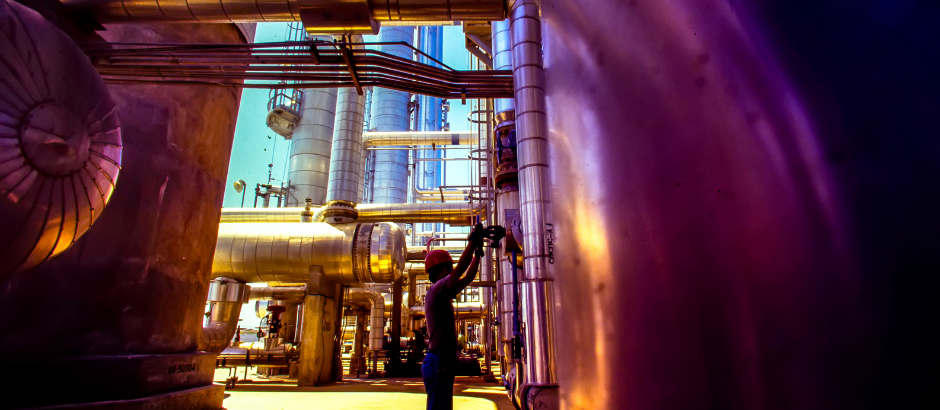A data driven journey to maintenance excellence: how we saved $46.5M of annual maintenance expenditure
It is a known fact that planned preventative maintenance is significantly more cost-effective than breakdown maintenance or replacing expensive parts. For many companies, preventative maintenance is seen as an investment – one that must be carefully balanced, planned, and scheduled to reap the economic and safety benefits so that the return on investment (ROI) can be realised.
Without a meticulously planned preventative maintenance management regime, companies are subject to increased risk of equipment failure, loss of production, and excessive maintenance costs.

We interviewed Peter Adam, Executive Vice President for our Asset and Integrity Management division, to learn about a global maintenance optimisation project for an international energy company where we optimised CMMS data, maintenance and materials for over 1.3 million tags.
In this blog, Peter shares insights into critical lessons learned from this project, the benefits that can be gained from investment into a data driven maintenance improvement initiative, and advice for others who are considering embarking on a similar project…
Can you give us a summary of why your client invested in a data driven maintenance optimisation initiative?
“As a market leader and organisation heavily focused on safety, operational excellence, and continuous improvement, our client recognised that preventative maintenance was an investment that would enable its operating assets to be safe, effective, and efficient.
“This required complete assurance that the right level of maintenance, on the right equipment, was being done with the right materials, at the right time – no more, no less.
“With this in mind, the company made the key decision, and subsequent investment, to review and optimise its complete preventive maintenance regime on a global scale, covering over 16 assets, across 4 regions, including more than 1.3 million equipment tags.
“To add to the complexity, the company was operating in different Enterprise Asset Management Systems (EAMs) due to previous acquisitions of assets, and wanted to consolidate their approach to preventive maintenance and asset management by migrating into one single EAM solution, which was Maximo.”
What were the drivers that triggered the investment in this project?
“Risk mitigation – first and foremost, the company wanted to ensure they had a consistent and quality approach to maintaining equipment across the globe.
“As safety is at the forefront of everything they do, they are committed to doing everything they can to mitigate risks to protect their people, the environment, and their business. And this project was crucial for providing the means to operate safely, by having complete visibility of what equipment they have, how important it is, how and when it should be maintained, and the materials that are required to do this.
“They recognised the benefits of implementing a consistent and centralised approach to maintenance across their operating assets. They wanted to take learnings of good practice maintenance and ensure they were replicated across the business, as well as utilise the recommendations provided by ABL to help enhance their reliability.
“Cost was another key trigger for this project. The company invested into this project during a period when commodity price was low because they realised the projected ROI through a number of pilot studies completed to try and test the approach. This gave their leadership confidence that undergoing this project would unlock significant cost benefits, transform the way they operate and enable them to effectively maintain their assets into the future.”
What type of work has been conducted as part of this project?
“As part of the project, our team within ABL was contracted to deliver the review, enrichment, optimisation, and data migration of their global approach to maintenance management. This included:
- Equipment identification: to ensure all equipment that requires maintenance was in the CMMS
- Equipment criticality: to ascertain how critical the equipment’s function is to the asset’s production and safety integrity, to determine the optimal maintenance requirements
- Equipment strategies: utilising an FMEA approach and discovering existing pockets of maintenance excellence to apply learnings across assets, ensuring the optimum level of maintenance is assigned to equipment
- Equipment task lists: providing high-quality task lists, and a consistent approach to how maintenance is performed by the maintenance team
- Equipment materials: populating the CMMS with the correct BoMs to ensure the right spares parts are identified to execute the maintenance
- Creation of Maximo upload templates
What are the main benefits that have been unlocked through this project to date?
“From our part of the project, there are some impressive results already, these include:
- Savings of over $7M per year through the cleansing and removal of 210,000 tags in CMMS that were duplicates or decommissioned equipment
- Savings of over $18.5M per year by rationalising 170,000 annual planned maintenance hours
- Savings of $7M per year through optimisation of annual planned maintenance work orders
- Savings of $14M on planning and efficiencies gains through enrichment of 147,000 Maintenance BoMs
“Having complete visibility of their equipment, and how important it is, has been instrumental in building the foundations for achieving maintenance excellence. Plant reliability is one of the most noticeable outputs of this project; not only are they setting record reliability statistics, but they are achieving this with optimised levels of maintenance, done at the right time, in a globally consistent manner.
“This project allows the company to know that they are maintaining equipment at an optimum level and rather than assuming this just because they have a maintenance management system in place. This helps them to effectively manage risks. By reviewing their existing maintenance to identify if it was fit for purpose, they were able to adapt maintenance strategies to be more effective and have confidence that this change would not only optimise expenditure and reliability, but also ensure the risk profiles were still being managed.
“By having up to date and accurate maintenance BoMs, the maintenance team can efficiently identify the right spare parts, with the correct specifications to execute the maintenance tasks. This has helped reduce equipment outage time, backlog, and expenditure associated with part sourcing.”
What do you believe are the critical success factors for helping ensure a maintenance improvement project can run as efficiently and effectively as possible?
“The most critical success factor has to be stakeholder buy-in from those who will be directly impacted by this project. And to do this effectively, the messaging should be tailored and aligned with their wants and needs, depending on the different people you are speaking to. For this project, the main stakeholder group was the regional and asset maintenance teams.
Key considerations for the regional and asset maintenance teams
To ensure the updates to the CMMS data and maintenance strategies were utilised and sustained by the maintenance teams on the assets, it was critical to:
- Communicate how the change would impact their ways of working and set the expectations for the inputs that were required from them
- Demonstrate the projected ROI and communicate “golden nuggets” as and when the gains were unlocked through regular reporting to the maintenance team
- Assure the key stakeholders and technical authorities validated the product and were part of the review and approval process to comment and approve the work completed by ABL
“In addition to the stakeholder buy-in, other critical success factors included:
- A rigorous process flow with clear roles and responsibilities, and touch points to set the strategy and manage expectations
- The basic engineering information being readily available and up to date (such as the P&IDs and asset registers), and if they are missing or outdated, do not waste any time in running a parallel project to plug those gaps as this data is key to the project success.”
And lastly, what advice would you give to others who are looking to undertake a similar project?
“Firstly, you need to fully understand the challenges and pain points that both the asset maintenance teams and leadership are experiencing, as well as their objectives to develop an improvement plan that is fit for your business needs.
“Many meetings, conversations, and workshops with people from different levels and departments within the organization are required to holistically frame what the solution needs to address before going to external support companies.
“Once you have a grasp on this, then it is time to start looking for solutions. In my experience, my advice to setting the solution up for success would be to:
- Develop a detailed scope of work that encompasses every input, deliverable and key consideration for project success to get a true idea of the investment required
- Identify your capacity to fix the issues, to understand whether this can be done internally or not, and what the risks are for both options to help weigh up the pros and cons of outsourcing
- Communicate the project “wins” to the key stakeholders on a regular basis to convey the investment vs the ROI. This will help to keep the momentum up, boost morale and sustain confidence in the leadership who invested in this project.


